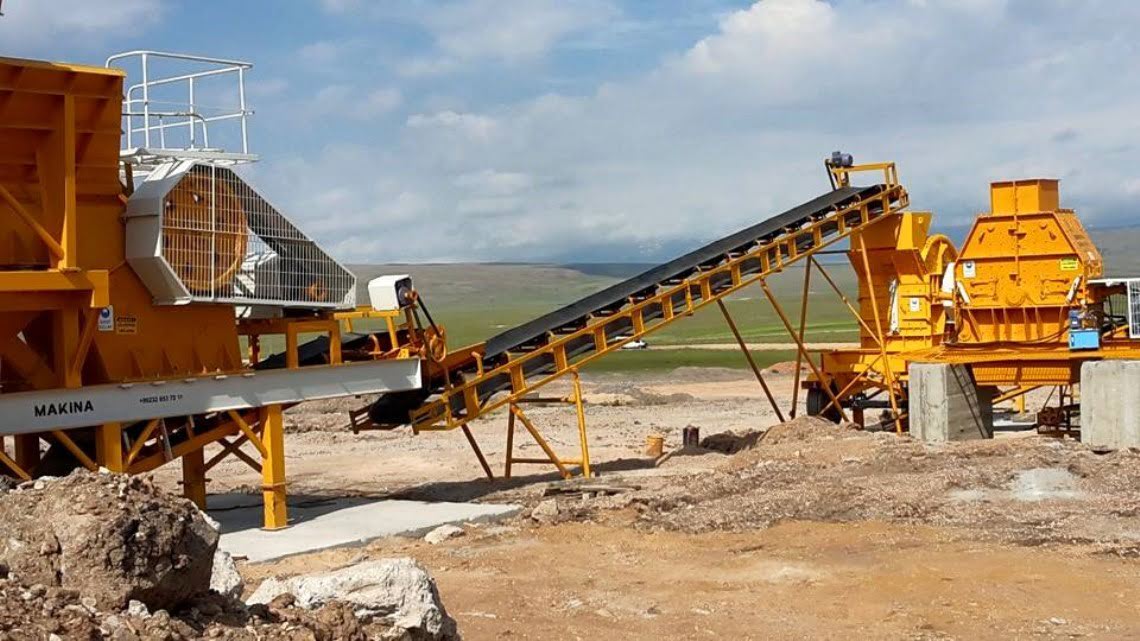
In the expansive world of construction, one might find themselves immersed in various activities and operations, each with distinctive importance. One such critical operation is rock crushing, laying the foundation for an efficient construction process. In essence, rock crushing breaks down large, sturdy rocks into smaller, manageable sizes for various construction uses. But what is the significance of rock crushing in the world of construction? How does it unearth efficiency in this domain? Let’s explore the answers in this deep dive.
The Role of Rock Crushing
The Backbone of Infrastructure Development
It’s worth noting that rock crushing acts as the backbone of infrastructure development. The procedure delivers high-quality aggregates – a crucial ingredient in concrete, asphalt, and base material used for roads, buildings, bridges, and other infrastructural projects. This pivotal role underscores rock crushing’s importance in construction.
Raw Material Availability
The omnipresence of rocks makes them a readily available raw material, reducing reliance on external suppliers and curbing potential delays in construction schedules. By performing onsite rock crushing, construction firms can cut down the costs associated with transportation and purchase of materials.
Environmental Impact
Rock crushing also promotes environmental sustainability. The process reduces the need for mining new material and the associated environmental degradation. Additionally, onsite crushing minimizes the carbon footprint by curtailing the transportation of materials.
The Impact of Rock Crushing on Construction Efficiency
As we delve into the effects of rock crushing, it becomes clear how this practice greatly enhances construction efficiency.
Cost-Efficiency
- Material Costs: Rock crushing helps firms lower their expenses by using onsite rocks. This action removes the need for purchasing materials, significantly cutting down costs.
- Transportation Costs: By conducting rock crushing at the construction site, companies can circumvent the transportation costs associated with moving large amounts of materials.
Time-Efficiency
- Improved Construction Timeline: The immediacy of materials obtained through rock crushing allows for a more streamlined construction timeline, mitigating potential delays.
- Quick Adaptability: In the face of unforeseen changes, rock crushing offers the flexibility to adapt quickly, delivering the necessary materials quickly.
Key Techniques in Rock Crushing
Rock crushing is not a uniform process. Various techniques come into play based on the desired size and use of the end product. Some of the most common methods include:
- Jaw Crushers: Utilized for primary crushing of large rocks. They work by compressing the rock between a fixed and a moving plate.
- Cone Crushers: Employed for secondary or tertiary crushing. These crushers further reduce the size of rocks by using a compressing force.
- Impact Crushers: Used for crushing softer rocks. They work by using an impacting force to crush materials.
- Gyratory Crushers: Suitable for hard and abrasive rocks. These crushers operate by using a gyrating crushing head.
Ensuring Efficiency in Rock Crushing
While rock crushing inherently promotes efficiency, certain practices can maximize this benefit.
Best Practices in Rock Crushing
- Routine Maintenance: Regular servicing of crushing equipment ensures its longevity and reduces the risk of unexpected breakdowns.
- Staff Training: Properly trained personnel can optimize the rock crushing process and enhance overall efficiency.
- Quality Control: Regular monitoring and testing of crushed material ensure consistent quality and adherence to specifications.
- Eco-friendly Practices: Implementing eco-friendly practices such as dust suppression can contribute to environmental sustainability.
Conclusion: The Cornerstone of Construction
At its core, rock crushing is a cornerstone in the construction world. It unearths efficiency through cost-effective, time-saving practices while upholding the principles of environmental sustainability. By recognizing the impact and importance of rock crushing, we can better appreciate the sturdy structures that pepper our landscapes, standing as testaments to the power of innovation in construction.




